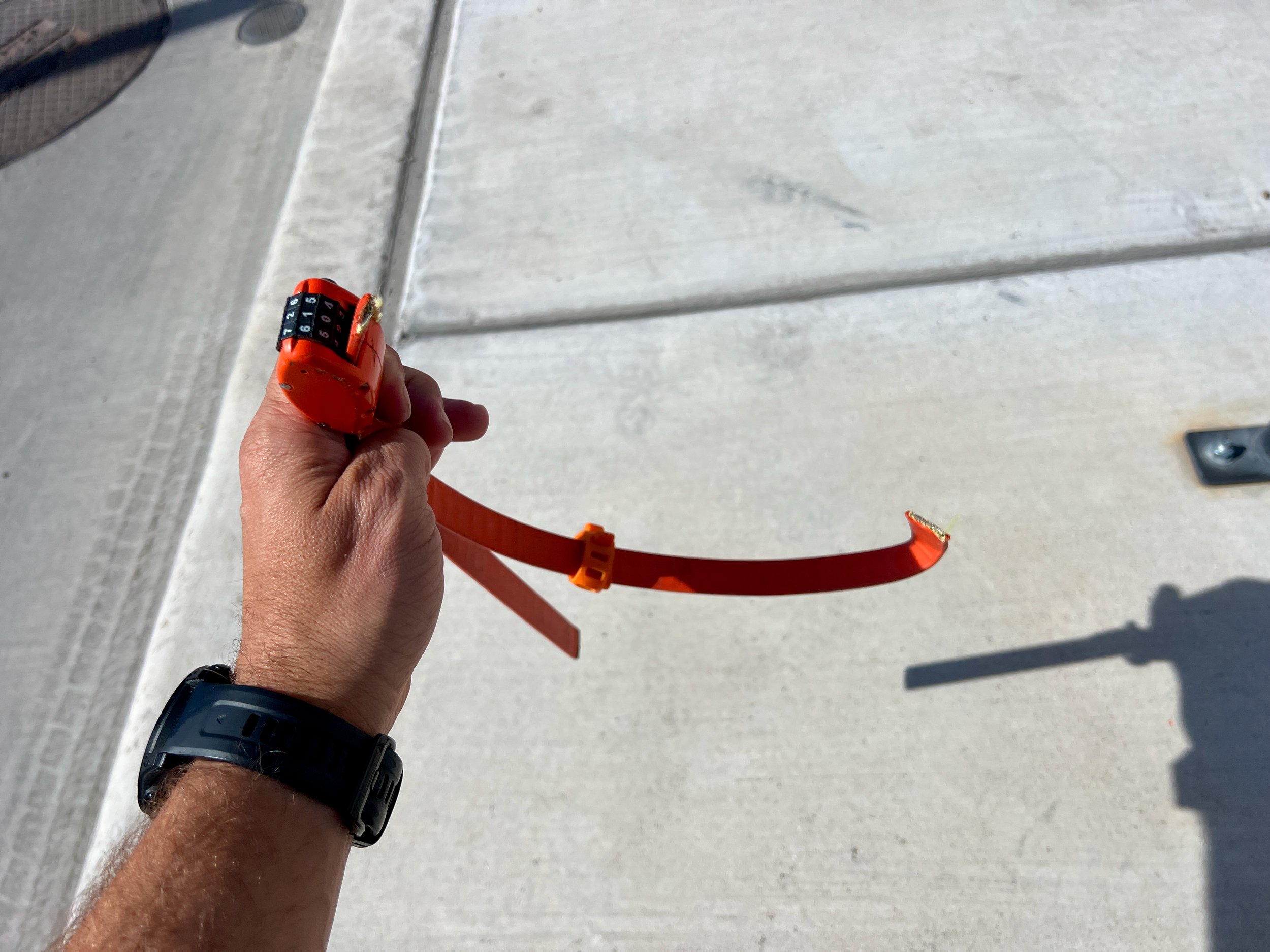Stolen Bikes and the Value of Insurance: What You Can Do to Protect Yourself
My Specialized Diverge gravel bike was stolen in broad daylight outside of a restaurant in Tucson, Arizona, a couple of weeks ago. This is the third major theft I've suffered in the past two and a half years, but it was by far the most brazen. While I have not yet learned all the lessons that I need to learn (apparently), I have unfortunately learned some life lessons the hard way over the past two years. I'm writing this post to share what I've learned with you about the value of insurance and the types of insurance available so that you don't have to figure things out the hard way and can hopefully save yourself some pain.
The Back Story
My Diverge parked out front of a different restaurant.
I was bike commuting around Tucson after dropping the van off for some warranty repairs and had stopped at a burger restaurant on Broadway for lunch. Broadway is one of the busiest streets in the city, and the restaurant kindly provided a secure bike rack out front. I looked around, analyzing the location, and figured that this highly-visible spot would be too exposed for a thief to try during the middle of the day. I pulled out my trusty commuter lock, which I'd been using for years, locked my bike to the rack, and went inside for lunch.
As I was eating, an employee ran in and said, "hey man, did you come here on a bike?!" As I was the only person in the place with a bike helmet and a backpack, it was pretty obvious. "Somebody is riding off with it!" He shouted.
I ran out the door, saw my cut lock lying on the ground, and looked around wildly for the perpetrator. And of course, he was already long gone. I quickly walked into the nearby neighborhood to take a look around, but in the urban density of Tucson, the chances of locating the bike were slim to none.
Multiple people saw the guy ride off with my rig—an employee taking out the trash, a woman in the drive-through... but none of that matters. One life lesson I learned from this particular instance is that I need to be more consistent about carrying my U-Lock with me, but I'm actually writing today about a life lesson that I learned the hard way from my previous bike thefts: insurance.
The Worst Theft of My Life
The worst theft of my life happened in 2020 when my entire Sylvansport GO camper was stolen off the back of my vehicle in the middle of the night. My Niner RIP 9 RDO was locked to the top of the camper, and the camper was also loaded with all kinds of outdoor gear—from backpacking gear to rock climbing equipment, bikepacking bags, and more. Even with conservative estimates, I had about $20,000 in outdoor gear stolen that night.
And none of it was insured.
While I had previously owned a home, and homeowners insurance would have covered much of this theft, I had sold that home recently, and wasn't renting an apartment or house anywhere, so I had no active insurance coverage to protect any of that gear. It was a total loss.
After that massive blow, I realized that I needed to learn about what insurance options were available to me, so I began to explore the vagaries of insuring a bicycle.
First Stop: Bike Insurance
My first stop was investigating dedicated bike insurance. When I finally bought a new mountain bike, I began by insuring it through Velosurance, which is one of the leading bike insurance companies available in the USA. (Based on my research, there are some really good bike insurance companies in the UK and Europe that don't yet have branches stateside.)
However, it quickly became clear that there are some major issues with a policy through Velosurance. Most notably, it is extremely costly. With Velosurance, you open a policy for each bike, and the bike is insured based on its value. For an ~$5,600 mountain bike in 2021, my premium cost about $57 per month. There is still a deductible to be covered in the event of an incident as well, but I think I settled on $500.
You can modify certain parts of the policy to adjust the coverage levels to fit your particular needs. Be sure to check out their online calculator and tools to build your own policy—it's pretty neat.
Velosurance protects against more than just theft, and some of their coverage seems especially ideal if you're a traveling semi-pro or professional racer. However, paying $57 a month to insure just one bicycle seemed extremely costly. So after a few months, I decided to look elsewhere.
The Winner: Renter's Insurance
I had never considered opening up a renter's policy because I was living entirely nomadically. I wasn't renting a room, a house, an apartment—anything. But after chatting with a few friends, I decided to call up my car insurance company (State Farm) and inquire about renter's insurance.
Here's what I learned.
Contrary to what I believed, you don't actually need to rent a place to have a renter's insurance policy. While you do need to provide a physical address for the policy, you don't actively need to be renting there (I chose the last address I had rented at). While most of a renter's policy is designed to protect against damage from flood, fire, and other disasters, it also protects against theft—and at least in the case of State Farm, it protects against theft of your property anywhere in the world—not just at the address you list on the policy.
When I learned the cost, it blew me away—and also saddened me that I hadn't opened a renter's policy in the past.
The policy I chose through State Farm covers $25,000 in damage per incident for both myself and my fiancee, and while it does have a $500 deductible, it only costs us $14 per month.
$14 per month! And that policy doesn't just insure one bicycle—it's insuring all of our bicycles, all of the belongings in our van, well... all of our belongings, period. Computers, phones, bikes, outdoor gear—you name it, it's covered.
Now does a renter's policy insure against some of the hyper-specific things that Velosurance does? No, no it doesn't. But my biggest concern was theft, and renter's insurance does cover that.. and covers it well.
Homeowner's Insurance Might Not Be Enough
It is interesting to note that in a recent sponsored post titled, "What Mountain Bikers Need to Know about Bicycle Insurance," that Velosurance published on Singletracks.com, they made no mention of renter's insurance. Instead, they mention homeowner's insurance as a competitor and then proceed to knock down this strawman for numerous reasons.
If your homeowner's policy doesn't cover your bikes adequately enough, then consider getting a renter's policy on top of it—through another company, if necessary.
Life Lessons Learned the Hard Way... and Paying Off
Many great adventures were had on that bike.
While unfortunately, I had to learn this insurance life lesson the hard way, the important part is that I did learn it eventually, and State Farm came through for me after this most recent theft of my Diverge. I filed a claim the next day, and not only did they cover the cost of the bike, but they also covered the cost of all upgrades I had made to the bike, accessories on the bike, everything. While I realized that I forgot to claim a few things, State Farm was extremely easy to work with, and I felt very grateful that they covered even expensive upgrades that I didn't have the documentation to conclusively prove that I had made.
After accepting the claim amount, they paid out the value via direct deposit in a couple of days... of course, less the $500 deductible.
That deductible still stings. I still experienced a serious loss from having that bike stolen, especially since bike prices have increased dramatically and it will cost even more to purchase a bike of comparable quality in 2023. Nevertheless, this renter's insurance coverage was absolutely a lifesaver during this horrible situation.
My full-carbon Specialized Diverge was by no means a cheap bike, but it was the most affordable bike that I currently travel with. It's worth noting that since the $500 deductible is per-incident, if, for example, you had a $12,000 mountain bike stolen, you'd still only pay the $500 deductible. In the worst-case scenario, if our van was broken into and cleaned out, we'd still only pay the $500 deductible to replace our gear and belongings as long as it was below our $25,000 max coverage.
Get Yourself some Renter’s Insurance
If you don't currently carry renter's insurance, for just $14 per month there's absolutely no reason not to get a renter's policy for yourself. It's cheap, it's easy to set up, and when horrible situations like this happen, it can be an absolute lifesaver.
While I feel somewhat embarrassed to have had yet another bike stolen from me, I had to overcome my embarrassment to write this post and share this information, because it's critically important. If this post can prompt even one person to get insurance that then saves them in the future, that will be reward enough for pushing through this embarrassment and sharing this story.
Take it from me: this is one life lesson that you don't need to learn the hard way.




